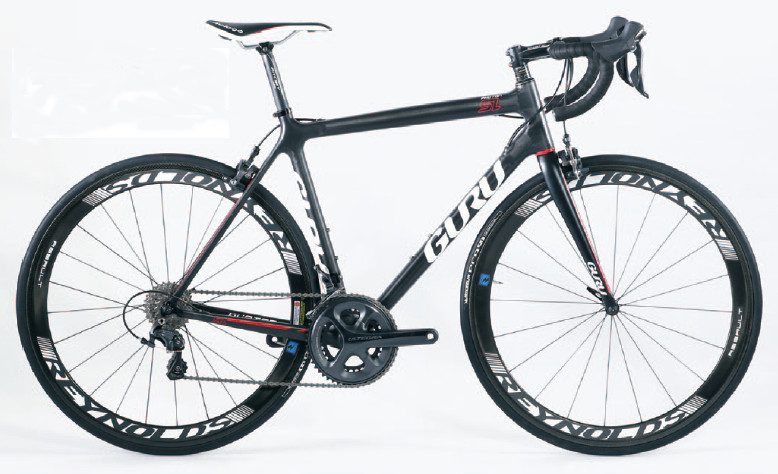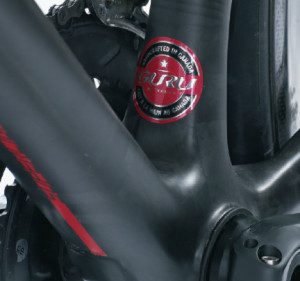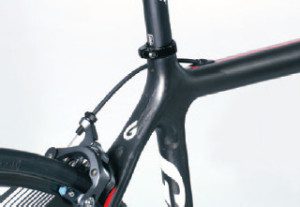Review: Guru Photon SL
“After 400 or 500 km, you start to better understand it,” Tony Giannascoli, the founder of Guru Cycles said. He was describing the ride quality of his carbon-fibre road machine, the Photon SL, and how its characteristics reveal themselves.


“After 400 or 500 km, you start to better understand it,” Tony Giannascoli, the founder of Guru Cycles said. He was describing the ride quality of his carbon-fibre road machine, the Photon SL, and how its characteristics reveal themselves.
Guru Photon SL
| Components | Shimano Ultegra |
| Wheels | Reynolds Assault C |
| Sizes (cm) | 51.5, 54.5, 57, 59.5, 61, 62.5 |
| Price | $7,500 |
| Website | gurucycles.com |
The Photon line made its debut at Interbike in 2009, but Guru has been involved with carbon fibre for almost 15 years. Giannascoli, an engineer himself, started experimenting with the material in 2000. The construction method he settled on for the Photon line is tube-to-tube, not the more common monocoque. At the company’s Laval, Que., facility, Guru employees take preimpregnated (pre-preg) carbon fibre, which means the material has resin already infused in it, and expose it to heat and pressure to form the tubes for a frame. Giannascoli prefers working with pre-preg to other forms of carbon fibre because more pressure can be applied to the pre-preg, which minimizes voids and makes the fibres behave as one unit.
Much of the tuning of a Photon’s ride characteristics come from the work done when the tubes are connected. “We have a technique for laying up directly on the frame, when it’s assembled,” said Giannascoli. “It’s a staggered layup for the joints themselves that allows us to fine tune the mechanical properties of the frame in certain areas. If we want the BB to be very stiff, we lay it up one way. If we don’t want as much stiffness, we lay it up a different way, and this is with the same amount of material.”

At the front, the head tube on my test bike (medium on the Guru size chart) slopes at a 72.9 degree angle. The Enve 2.0 Road fork has a rake of 4.3 cm, giving the bike a trail of 5.8 cm. The numbers fall within the range of most raceoriented frames, but don’t convey how lively the bike is. It’s one of the more responsive bikes I’ve ridden, jumping into corners easily. Yet, it also tracked very well. If I was out of the saddle, throwing the bars back and forth in my best Thomas Voeckler impression, the bike stayed true. It was responsive without being twitchy.

Other than their made-in-Canada stickers, another novel feature of Guru bikes is their ability to be customized. Because the company makes its own tubes, it can cut them to the dimensions you’d like. There are, however, also more off-the-shelf options. The Photon SL I tested was the standard medium size, which the company says is Size 57. Usually, I ride a 54 cm frame, but Guru’s 57 cm was spot on. Make sure to review the geometry carefully before picking your frame. The Photons come with Ritchey stems and bars. The wheels on my test bike were Reynolds Assault Cs, and the drivetrain, the very precise Shimano mechanical Ultrega gruppo.
The SL was designed to be a ‘Goldilocks’ bike with a frame that performs well in races, on climbs and even on long rides over country roads.
Although I got in many kilometres on the Photon SL, I did fall short of Giannascoli’s recommend distances. It’s a shame, really, that deadlines always come too soon. The bike does reveal great features from the beginning, such as its tracking and responsiveness. The finely tuned ride qualities come a bit later. But, I am planning to ride the lively bike a little bit longer, and not just for research purposes.
